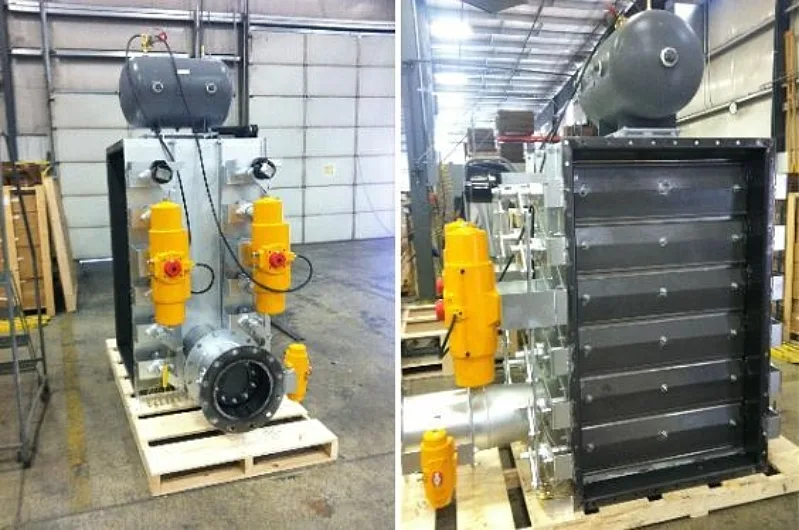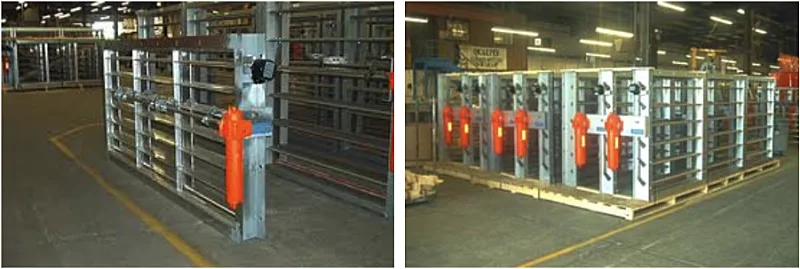Dampers are often the unsung heroes of modern heating, ventilation, and air conditioning (HVAC) systems. Part of an HVAC system, dampers open and close to change or redirect air flow. This change in airflow is critical to an HVAC system’s proper operation. A damper actuator is a critical component that controls the opening and closing of a damper.
Dampers can control the amount of air from outside a building that enters an HVAC system. They can also control the amount of conditioned air that is sent to different areas served by the HVAC system. The system type and configuration in the building will dictate the kind of damper and actuator used. Damper actuators are available from manufacturers in both electrical, hydraulic, and pneumatic configurations, with spring return, rotary, and linear variations also available.

Purpose and Functionality
The primary purpose of a damper actuator is to allow an HVAC system to modulate or change airflows throughout the HVAC system by adjusting the angle of the damper’s blades between open and closed . This function is of critical importance in managing the power needed to cool every space in a building while also keeping conditions consistent throughout the building.
The Economizer Mode allows the HVAC system to utilize outdoor air for free cooling. Making use of outside air is cost-effective and less taxing on the overall mechanical system when the outside temperature is suitable. This is achieved with help from dampers and actuators. The actuator can also open the damper to push warm air out as the air within cools, to further optimize the HVAC system's operation. Bringing in filtered outdoor air improves indoor air quality.
Types of Damper Actuators
Damper actuators operate under different control systems. Pneumatic damper actuators are used for systems controlled by air pressure. They typically have a spring that drives blade rotation, and is activated by feeding compressed air to the actuator.
Electric actuators are quite common in modern HVAC applications. Electric actuators come in many different varieties including on/off type or modulating type. Modulating actuators allow the damper’s blades to rotate incrementally as the signal from the controller changes.
Other types of actuators for HVAC dampers include spring-return, as well as non spring-return actuators. Actuators with spring-return are generally driven by motors, but use internal springs to return the damper to a specific failure mode if power is lost.
Some damper actuators include a capacitor in case of power failure. The capacitor can store power which the actuator can use to rotate the damper’s blades. When power is lost, the actuator automatically opens or closes the damper based on the settings.
The actuator must have enough power to keep the damper in the proper position even with full airflow power. Actuators can also be mounted in various ways, often with the use of separately purchased kits. Manufacturers, such as AWV, can also customize damper actuators for customers based on characteristics such as airflow volume.
Importance of Proper Sizing and Selection
Selecting the appropriate damper actuator is crucial for the system efficiency. Factors to consider include the type of damper seals, the number of damper sections, and the velocity of the air. The static pressure of the system under normal conditions is another crucial consideration. Higher static pressures and higher air velocities require more torque to operate the damper. Calculate these variables by determining the damper torque and damper area. These mathematical formulas can also assist in deciding the best size and type of actuator.

Dampers are the final control devices for almost all airflow in HVAC systems, and actuators serve as the interface between the control system and the mechanical system. They play a critical role in accurate control. If they are not positioned accurately, then all other parts of the air system suffer. A controller cannot compensate for incorrect damper or actuator sizing.This highlights the importance of getting the selection right at the outset. Many damper actuators also offer position sensors that allow for closed-loop feedback, to allow the controller to confirm the damper position.
Getting the Damper Actuator Right the First Time
Damper actuators play a pivotal role in HVAC systems. Their accurate sizing and installation are imperative to the effective operation of the system. When correctly implemented, they help optimize the energy usage of the HVAC system, to contribute to a more sustainable and cost-effective building operation. When not sized or installed properly, damper actuators can be overly expensive or may not function well at all.
For all of your damper and actuator needs, trust American Warming and Ventilating (AWV). With a wide range of products designed to meet your specific requirements, AWV is your go-to source for high-quality damper actuators. Contact the damper actuator experts at AWV today to learn how our products can enhance the performance and efficiency of your HVAC system!


